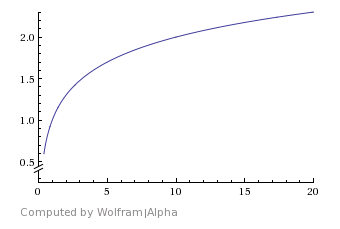ax·i·om (noun)
A statement or proposition that is regarded as being established, accepted, or self-evidently true.
A statement or proposition on which an abstractly defined structure is based.
Introduction
A statement or proposition that is regarded as being established, accepted, or self-evidently true.
A statement or proposition on which an abstractly defined structure is based.
In Math, axioms are foundational units used to built entire theories classifications upon (e.g. group theory, combinatorics). Without further ado, here are my axioms of maintainability.
Definitions
terminal character, a line feed or end of file character.
line, an array of characters ending with a terminal character and not containing 2 or more terminal characters.
// This is a line, as are the rest in this code fence.
console.log('Hello World!');
maintenance cost, metric used to measure how many actions must be taken when an alteration is made to any character or set of characters in a line. This is also known as cost of maintnence.
zero, the additive identity from group theory.
non-zero, an element from a group that is not the additive identity/zero.
Axioms
Axiom of emptiness
If a line contains no characters except for a terminal character, it has zero cost of maintainenance. The following example is intentionally blank.
Axiom of non-emptiness
If a line that contains at least one character that is not a terminal character, has a non-zero maintenance cost.
// This `line` has a `non-zero` `maintenance cost` as does the next.
console.log('...but I am so innocent ;_;');
Axiom of addition
Given multiple lines, the cumulative maintenance cost is the sum of each line's maintenance cost`.
// Assume this `line` has a `maintenance cost` of 1
console.log('and this has a `cost` of 5. Then, then the cumulative `cost` is 6');
Applications
Now that we have a short and sweet set of definitions and axioms, it is time for some applications.
If you didn't notice, the maintenance cost is never defined in the theory; the application process should defines how a cost is calculated. In most cases, comments and whitespace are "cheap" to maintain:
// This line costs `1` unit
// This line costs `2` units since it has leading whitespace and a comment
and a line of code's cost depends on its complexity:
console.log('In this application, I cost `5` units.');
// but the minified version of jQuery could cost 1000 units.
(function(e,t){var n,r,i=typeof t,o=e.document,a=e.location,s=e.jQuery,u=e.$,l={},c=[],p="1.9.1",f=c.concat,d=c.push,[...]
The goal should not be to keep the total maintenance cost as low as possible but to keep the growth as logarithmic as possible:
Exponential growth (bad):

Logarithmic growth (good):

Explaining why copy/paste is bad via theory
Let's assume your application looks like:
var fs = require('fs'),
http = require('http');
http.createServer(function (req, res) {
// Send a valid status code
res.writeHead(200);
// Stream over file to response
fs.createReadStream('index.json').pipe(res);
}).listen(3000);
We will give that a maintenance code of 32 (1 for comments, 5 for line of code). Now, let's say your application begins to get more and more complex:
var fs = require('fs'),
http = require('http');
http.createServer(function (req, res) {
if (req.url === '/' && req.method === 'POST') {
res.writeHead(404);
res.end();
} else if (req.url === '/') {
res.writeHead(200);
fs.createReadStream('index.html').pipe(res);
} else if (req.url === '/info') {
res.writeHead(200);
fs.createReadStream('info.json').pipe(res);
} else if (req.url === '/info' && req.method === 'PUT') {
res.writeHead(200);
fs.createReadStream('info.html').pipe(res);
} else if (req.url === '/about') {
res.writeHead(200);
fs.createReadStream('about.html').pipe(res);
} else if (req.url === '/secret') {
res.writeHead(200);
fs.createReadStream('secret.json').pipe(res);
} else if (req.url === '/more-info.html') {
res.writeHead(200);
fs.createReadStream('more-info.html').pipe(res);
} else {
res.writeHead(404);
res.end();
}
}).listen(3000);
The above has a maintenance code of 147 and includes no comments. This is what exponential growth feels like.
Next, imagine what happens if node were to deprecate fs.createReadStream, almost half of the lines of code would need to be updated. On top of which, each would need to be tested, making everything more painful if you lack automated testing.
Explaining why DRY code and abstraction is good via theory
If we DRY up the code via a module like express, normalize all requests to be to .json/.html, then the maintenance of the above code decreases significantly.
var express = require('express'),
app = express();
// Host all local content statically (e.g. 'index.html', 'info.json', 'about.html', 'secret.json')
app.use(express['static'](__dirname + '/public'));
// Start listening for requests
app.listen(3000);
Additionally, if fs.createReadStream or any other core node methods were to be deprecated, they would be swallowed by express, leading to 1 line of updated code for the package.json. This is what logaritmic growth feels like.